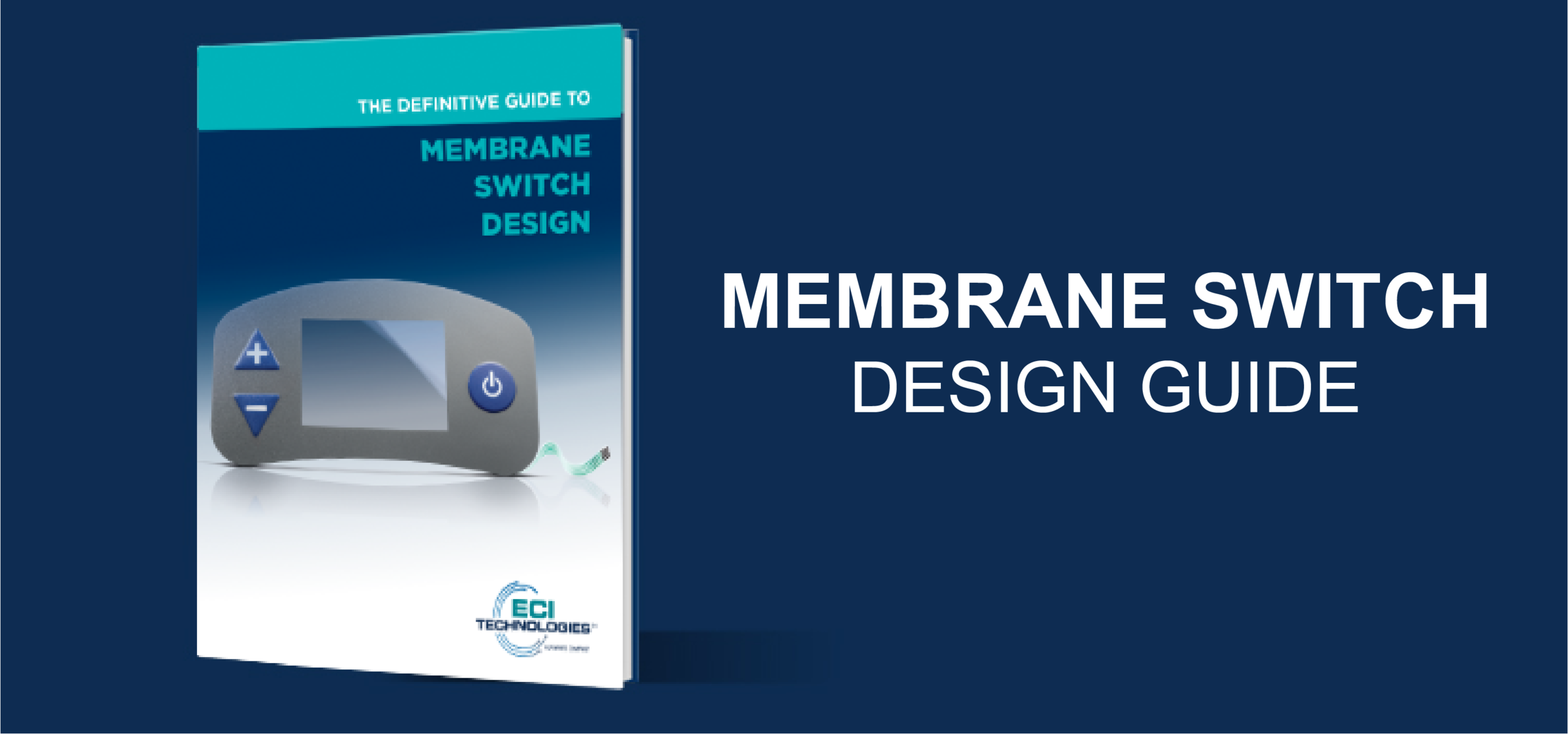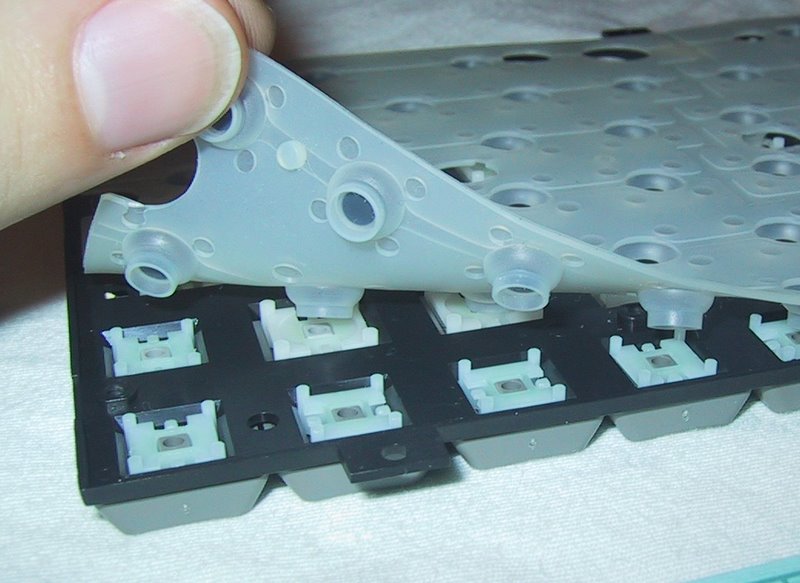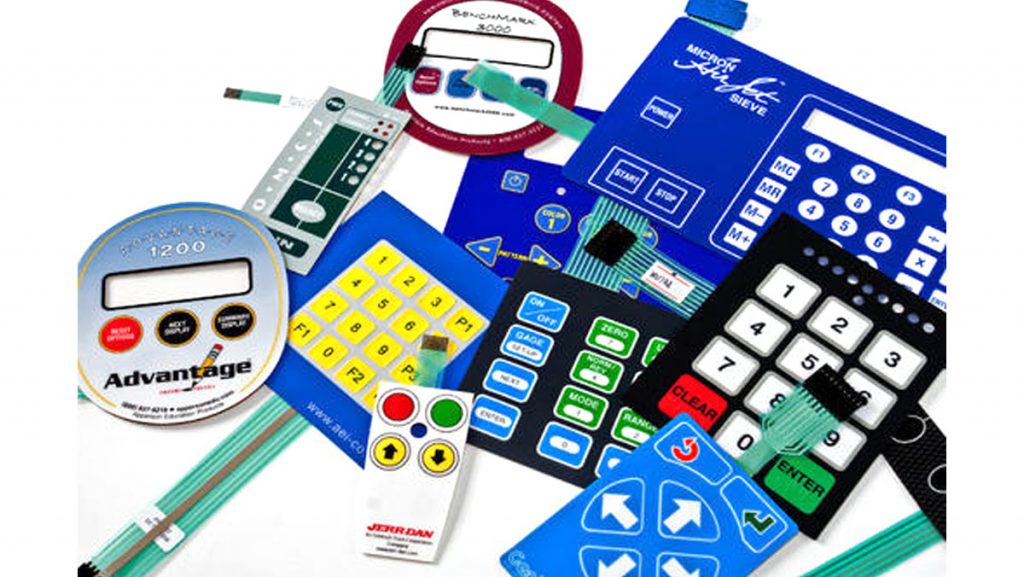Custom Membrane Switches for Specialized Applications: A Deep Dive
Custom Membrane Switches for Specialized Applications: A Deep Dive
Blog Article
Understanding the Value of Membrane Switches in Individual User Interfaces
Membrane buttons are essential elements in the layout of efficient user interfaces, assisting in not only performance but additionally enhancing aesthetic appeal and user communication. Their distinct functions, such as resistance to personalized designs and environmental elements, make them appropriate for a varied selection of applications throughout several sectors. As we check out the various advantages and future fads connected with Membrane technology, it ends up being clear that these buttons are extra than just elements; they stand for a convergence of technology and practicality. The effects of this technology on customer experience are worth checking out better.
What Are Membrane Switches?

The spacer layer, which includes glue residential or commercial properties, enables the separation of the circuit layer from the overlay, guaranteeing that the button remains in a non-activated state until pressed. When pressure is put on the overlay, it compresses the spacer layer, connecting the space and finishing the circuit in the underlying layer. This design not just lowers the physical space required for typical mechanical switches however additionally enhances the toughness of the gadget, as Membrane switches are generally resistant to dust, dampness, and various other ecological variables.
Commonly located in applications varying from consumer electronic devices to medical gadgets, Membrane buttons are important to modern-day technology, supplying a effective and straightforward user interface that straightens with contemporary style needs.
Benefits of Membrane Buttons
While various switch technologies exist, Membrane Switches offer distinctive advantages that make them especially preferable in numerous applications. One of the key benefits of Membrane switches is their small layout, which enables space-saving applications in devices where property is restricted. Their slim account not only enhances aesthetic allure however additionally helps with light-weight building.
An additional substantial advantage is their resistance to environmental factors. Membrane switches are usually secured versus wetness, dirt, and contaminants, making them optimal for usage popular atmospheres, such as medical tools and industrial devices. This longevity expands the lifespan of the switch, reducing upkeep prices and improving integrity.
Furthermore, Membrane switches can be personalized to satisfy particular design requirements, incorporating distinct graphics and shades that enhance individual interaction. Their tactile comments choices can additionally be tailored to offer a rewarding individual experience. In addition, Membrane switches are cost-effective, particularly in high-volume applications, as they can be created successfully.
Applications in Different Industries

In the customer electronics industry, Membrane buttons prevail in devices such as microwaves, cleaning equipments, and remotes. Their responsive responses and visual options improve customer experience while offering a smooth, modern look. In addition, vehicle suppliers make use of Membrane switches in control panel controls and infotainment systems, where room is limited, and user involvement is essential.
Moreover, the industrial market leverages Membrane buttons in control panels for machinery and equipment, permitting for instinctive operation in usually rough settings. Their resistance to chemicals and moisture ensures longevity and dependability in these applications. In general, the flexibility of Membrane Switches adds significantly to click their extensive usage, making them important in different technical domain names.
Design Considerations for Membrane Switches

When designing Membrane switches, several crucial considerations have to be taken into consideration to guarantee ideal performance and individual experience. Firstly, the choice of products is crucial; picking durable, high-grade substratums can enhance the switch's long life and resistance to ecological aspects such as dampness and temperature variations.
Second of all, the layout of the graphic overlay need to prioritize quality and ease of use. Symbols and text should be legible, and the design must facilitate user-friendly communication (membrane switches). Additionally, responsive responses is important; including a tactile dome or other systems can enhance the user experience by supplying physical confirmation of activation
An additional vital variable is the switch's electric performance. Developers should guarantee that the conductive traces are properly developed to reduce resistance and stay clear of signal interference. This entails analyzing the called for actuation pressure and guaranteeing compatibility with the electronic parts they will certainly user interface with.

Future Fads in Membrane Technology
As technology continues to advance, Membrane buttons are positioned to evolve significantly, driven by developments in materials and manufacturing strategies. One emerging pattern is the incorporation of advanced materials, such as flexible substratums and conductive inks, which boost durability and lower the general weight of Membrane switches. These materials not just improve the responsive action however also permit for the style of buttons that can stand up to harsher environmental conditions.
Moreover, the integration of touch-sensitive innovations is changing typical Membrane Switches into even more interactive interface. Capacitive touch sensing units installed within Membrane button panels can supply an extra receptive and instinctive user experience, straightening with the expanding need for smooth, contemporary designs in consumer electronics.
Furthermore, advancements in printing techniques, such as digital and 3D printing, enable quick prototyping and modification of Membrane switches. This adaptability permits suppliers to react faster to market demands and consumer choices.
Finally, sustainability is coming to be a considerable focus, with makers discovering eco-friendly products and processes. As these fads unfold, the future of Membrane modern technology promises boosted performance, visual appeal, and environmental obligation, strengthening their function Visit Website in innovative customer interfaces throughout various markets.
Conclusion
In final thought, Membrane Switches represent an important element in the style of customer interfaces, incorporating capability with aesthetic flexibility. As improvements in innovation proceed, the advancement of Membrane buttons is anticipated to further improve user interfaces, driving innovation and enhancing functionality in an increasingly complicated technological landscape.
Membrane switches are essential parts in the style of reliable individual interfaces, promoting not only capability however likewise enhancing visual charm and individual communication.Membrane Switches offer as an important component in numerous user interfaces, assisting in a click here to find out more seamless communication in between customers and electronic gadgets.While various button innovations exist, Membrane Switches offer distinct advantages that make them specifically preferable in various applications.Moreover, Membrane switches can be tailored to meet particular layout demands, including distinct graphics and colors that enhance individual communication.In conclusion, Membrane Switches stand for a crucial component in the style of user interfaces, integrating capability with aesthetic flexibility.
Report this page